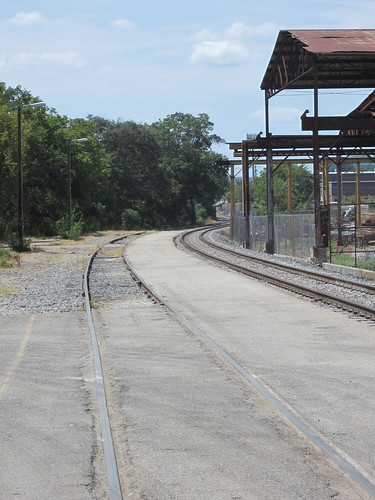 Twenty one is a good number. If you play Blackjack, it is a winner. So with that in mind, let’s just assume that today’s episode of the Ruminations is a sure-fire winner. At least that’s my story, and I am sticking with it.
Twenty one is a good number. If you play Blackjack, it is a winner. So with that in mind, let’s just assume that today’s episode of the Ruminations is a sure-fire winner. At least that’s my story, and I am sticking with it.
I had thought that today’s episode would be a video release party of sorts. Well, once again I was sadly mistaken. So here's the deal: the official start to the video blogging begins on September 1. Period. Quote me on it.
In the meantime, there are probably no fewer than 21 reasons to ignore the Iowa straw poll. There might be even more – who knows? When the theme of the Ruminations is something along the lines of “truth is stranger than fiction”, well, it became readily apparent in Ames. Michele Bachmann? Ah yes, it is time for more Rhubarb.
1. With Ames distinctly in your rear view mirror, how can we not mention the biggest candidate who didn’t grace the straw of Ames? Texas Governor Rick Perry is now in the running for the Republican Presidential nomination.
 Training for any sport involves building a framework that will foster success. Program design is the most critical building block for a successful training plan. Periodization, an integral part of program design, can help build this foundation if used correctly.
Training for any sport involves building a framework that will foster success. Program design is the most critical building block for a successful training plan. Periodization, an integral part of program design, can help build this foundation if used correctly.
An effective training program should foster four main goals: build the desired performance level, prevent detraining, prevent under-recovery (and injury), and provide for a standardized and methodical progression of mechanical loading.
Though many coaches will agree on the types of workouts needed for success, there is great disparity in the application of the principles of periodization. This could, in effect, be the difference between success and failure, or between optimal performance and injury.
There are 5 key concepts underlying any optimal training program:
 It had all lead up to this one particular moment. It was August 12, 1990. I was standing on the edge, ready to jump.
It had all lead up to this one particular moment. It was August 12, 1990. I was standing on the edge, ready to jump.
I had been thinking of moving to Texas for years. Somehow, it had wedged it’s way into my consciousness. The fascination started with an exploration of Austin music in the early ‘80s. After graduating from Queen’s University, I took a week to hang out in Austin to experience it and explore the great state of Texas. I flew back to Canada thinking that this might be a great place to live.
I realized that as a physiotherapist, I could work in just about any place I desired. The decision would be just as much about quality of life as it would be about my career. With that in mind, on May 20, 1989 I went on a two week fact-finding mission to Austin.
Now, 442 days later, it had become a reality. I had jumped all the hoops, packed up my things, and I was ready to go.
Now all I had to do was hop on that train and ride. Yes, you heard correctly: a train.
 I would really like to think that the clinical reasoning process is simply a matter of weighing evidence, applying the principles of logic and deductive reasoning, and making sound decisions based on the evidence. Sounds pretty simple, doesn’t it?
I would really like to think that the clinical reasoning process is simply a matter of weighing evidence, applying the principles of logic and deductive reasoning, and making sound decisions based on the evidence. Sounds pretty simple, doesn’t it?
But I know better. It’s not just about evidence. It never has been. If it was, there would never be any emotionally-charged debates on an assessment method or a treatment technique.
Clinical reasoning involves beliefs – whether we want to believe so or not - and beliefs can have a significant disparity with scientific evidence.
We're all driven by our belief systems. We select data to support our beliefs. We impose our own biases on the world around us. Beliefs are not necessarily lies, but they aren’t necessarily the one-and-only “truth” either. Beliefs can trump evidence, sad as that may sound.
But if we know how we function, and we are aware of our thought processes, then we can have greater insight into all the factors that truly impact clinical reasoning. We can become better clinicians and, better yet, better people. With this in mind, I propose a new model for understanding the perceptual factors that influence the clinical reasoning process.
 Periodization has become the Holy Grail of sport training. Don’t all the best athletes and coaches utilize different phases of training at different times of the year?
Periodization has become the Holy Grail of sport training. Don’t all the best athletes and coaches utilize different phases of training at different times of the year?
The concept, in theory, makes great sense. Training should be built around the human body’s normal mechanisms of training adaptation and recovery. Training should be designed in order to optimize gains in performance while minimizing the risk of injury.
But the traditional application of periodization is lacking. As many other issues in sport training, it has a good basis in physiology, but incomplete interpretation and application. So is periodization hurting your training plan? And if so, what can we do to optimize it?
 The ‘60s have always been a fascinating era in history for me. It was a time of social and political upheaval, of discovery, and of pushing the envelope of our collective thinking. A man on the moon within a decade. Civil rights. War protests. Woodstock. Philosophically, this era has always made sense to me – for countless reasons. Music was inherently tied in to “the message”. Music became a powerful connector of people and of social causes.
The ‘60s have always been a fascinating era in history for me. It was a time of social and political upheaval, of discovery, and of pushing the envelope of our collective thinking. A man on the moon within a decade. Civil rights. War protests. Woodstock. Philosophically, this era has always made sense to me – for countless reasons. Music was inherently tied in to “the message”. Music became a powerful connector of people and of social causes.
One of the icons of the era would have to be Neil Young. I have always had an immense appreciation for Young. I can thank my father for first exposing me to Young’s musical brilliance. I came to Young’s music primarily through albums like “Rust Never Sleeps” (1979). It was the raw guitar edge that was so stunning to me. The sounds that he could pull out of “Old Black” defined the word “grunge” before that phrase ever became popular.
But Young’s music (and guitar playing) is just a part of this equation.
As a lyricist and songwriter, Young will most certainly be considered one of the greats of our era. Over the past 4 decades, he has continued to meld strong social lyrics with a fearlessness to say what needs to be said – about love, and about war. And he has been his own man in the process, marching to the beat of his own drum.
 I am very thankful that I have always had a lot of interests in life, and that I have had the great fortune to be able to immerse myself in many of them over the years. I think they call that “life experience”.
I am very thankful that I have always had a lot of interests in life, and that I have had the great fortune to be able to immerse myself in many of them over the years. I think they call that “life experience”.
When it comes to writing and blogging, most “authorities” suggest finding a niche and then writing about it. That’s easy if you only have one or two areas in your life that tantalize your intellectual and emotional senses. When I started writing in earnest, I thought that keeping work separate from life was the “right” thing to do. But as I have found a voice in my writing, I have discovered that “who I am” meanders through all of it, providing that “je ne sais quoi” that makes it all a reflection of me.
There is always a lot happening down at my Crossroads of work and life. Here’s what to expect on this website and blog in the weeks ahead. I hope you’ll come along for the ride.
 "Running Injuries: Etiology And Recovery- Based Treatment" (co-author Bridget Clark, PT) appears in the third edition and fourth editions of "Clinical Orthopaedic Rehabilitation: A Team Approach" by Charles Giangarra, MD and Robert C. Manske, PT.
"Running Injuries: Etiology And Recovery- Based Treatment" (co-author Bridget Clark, PT) appears in the third edition and fourth editions of "Clinical Orthopaedic Rehabilitation: A Team Approach" by Charles Giangarra, MD and Robert C. Manske, PT.
 Allan Besselink, PT, DPT, Ph.D., Dip.MDT has a unique voice in the world of sports, education, and health care. Read more about Allan here.
Allan Besselink, PT, DPT, Ph.D., Dip.MDT has a unique voice in the world of sports, education, and health care. Read more about Allan here.
 Top 5 finalist in three categories: "Best Overall Blog", "Best PT Blog" and "Best Advocacy Blog".
Top 5 finalist in three categories: "Best Overall Blog", "Best PT Blog" and "Best Advocacy Blog".